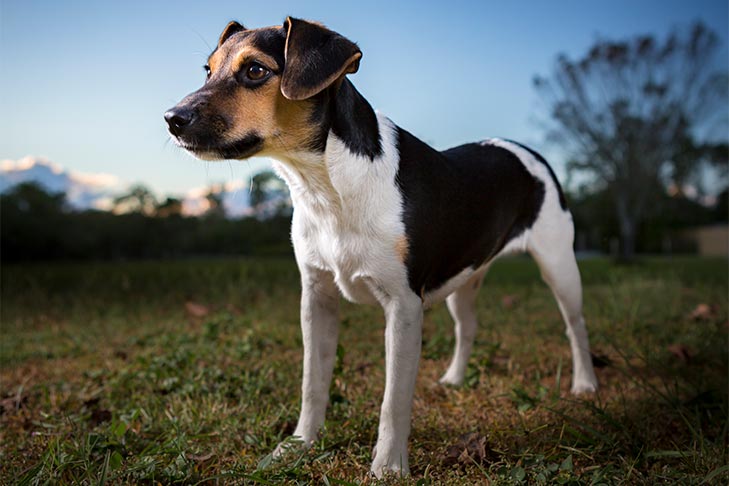Fleas are parasites that carry disease and feed on the blood of the host animal. The saliva from a flea bite contains proteins and enzymes that can cause dryness, itchiness, and irritation. Some flea-borne diseases can spread to humans and other pets, so prevention is the best strategy for keeping everyone safe, including knowing when it’s flea-and-tick season in your state. There are many flea preventatives on the market that vary in effectiveness and the type of parasite they treat. For instance, some products target ticks and fleas.
If you’ve researched natural or holistic options for flea control, you might be wondering, is diatomaceous earth safe for dogs? Diatomaceous earth kills fleas that come into contact with this powdery substance, which is made from silica. Before using any product around your dog, make sure to read the label carefully and consult with your veterinarian to ensure it’s the right choice for your dog and your home.
What Is Diatomaceous Earth?
Some people consider diatomaceous earth for fleas to be part of a holistic approach to keeping parasites away from their pets, homes, and businesses. Diatomaceous earth is “a naturally occurring substance which is derived from the shells of fossilized algae,” says Dr. Linda Simon, veterinarian at Senior Tail Waggers. Currently, more than 150 products with diatomaceous earth are registered for use around farms, buildings, gardens, and pet kennels for controlling pest populations, according to the National Pesticide Information Center.
Diatomaceous earth is made up of single-celled organisms called diatoms, the skeletons of which contain silica. As these fossilized remains accumulate in streams, rivers, and lakes, they can be extracted. They’re then used to make a variety of products, including toothpaste, skincare products, food, beverages, paint, and even dynamite. The U.S. Food & Drug Administration labels products as “food grade” when they contain purified diatomaceous earth.

How to Use Diatomaceous Earth for Fleas
Diatomaceous earth works by absorbing the oils and fats from an insect’s exoskeleton, which causes the parasite to dry out and die. When viewed under a microscope, diatomaceous earth has jagged edges that look similar to shards of glass. These sharp edges can irritate or puncture the outer shell of a flea, thereby removing the exoskeleton and speeding up the drying process.
Female fleas can start producing eggs 24 to 36 hours after mating. Being exposed to diatomaceous earth can kill an adult flea within a few hours and may kill off some larvae. However, this product isn’t very effective at killing insect eggs, which can remain on your dog’s fur and bedding and continue the cycle of reproduction.
Despite the damage that diatomaceous earth can do to an insect’s body, its effectiveness in preventing fleas is debatable. “Diatomaceous earth is certainly not a parasite prevention method they advise using in veterinary school,” Dr. Simon says. “I’ve never recommended a client use it and don’t plan on doing so in the future.”
How to Spread Diatomaceous Earth for Fleas
Since diatomaceous earth is abrasive and good at absorbing fats, it has potential uses as an insecticide. Research suggests that diatomaceous earth could be an environmentally friendly alternative to using synthetic pesticides.
Though this substance is considered nontoxic to people and pets, it doesn’t mean that using diatomaceous earth for dogs is without risk. For instance, you should avoid applying the product directly to a dog’s skin because it can irritate their eyes, skin, and respiratory system, she says. She also advises against spreading this product inside your home since your dog might consume it, roll in it, or accidentally ingest it when they groom themselves.
People who use this product should take safety precautions to protect themselves and others in the home. Such measures include wearing gloves, protective glasses, and a face covering to avoid inhaling dust particles or getting them in your eyes. You can use this product on carpets, floors, and baseboards. You can leave diatomaceous earth on the carpet for fleas for up to three days. Afterward, make sure to vacuum soft surfaces and thoroughly wipe down hard surfaces. When using this product outdoors, you will need to dispense a larger amount because it won’t work as well in the wind and rain.

Alternatives for Flea Prevention
While diatomaceous earth may be seen as an option for those seeking natural flea control, its efficacy is often considered to be limited. Diatomaceous earth is unlikely to kill all adult fleas and does not stop flea reproduction. Fleas left behind are still able to bite pets and reproduce.
Diatomaceous earth can also have adverse health consequences for your dog, according to Dr. Simon. “There are better products you can use to treat infestations in the environment, such as sprays, like Indorex,” she says. If you opt to use diatomaceous earth as an insecticide, she recommends adding it to soil and making sure your dog steers clear of the treated area.
In the case of a significant flea infestation, she recommends using a spot-on treatment containing Imidacloprid. Other options that are safe for dogs are a tablet, like Nexgard, or a collar, such as Seresto. “Dog owners should treat all pets and the home, as up to 95% of any flea burden live off the pet,” she says.
If you’re keen on using natural products, diatomaceous earth may help reduce the flea population. For peace of mind, “there are much safer and more efficacious flea preventative methods available today,” she adds. Your best bet is to consult with your veterinarian on what will be most effective.
The post Diatomaceous Earth for Fleas in Dogs: Uses, Side Effects, and Alternatives appeared first on American Kennel Club.



0 Comments
Recommended Comments
There are no comments to display.